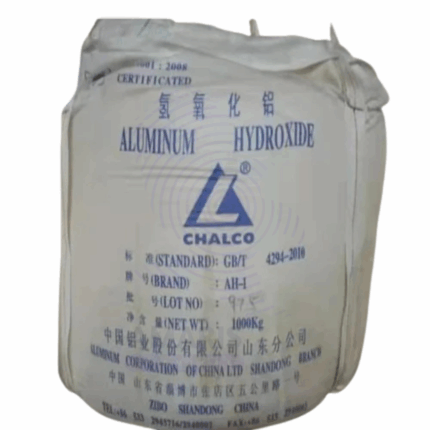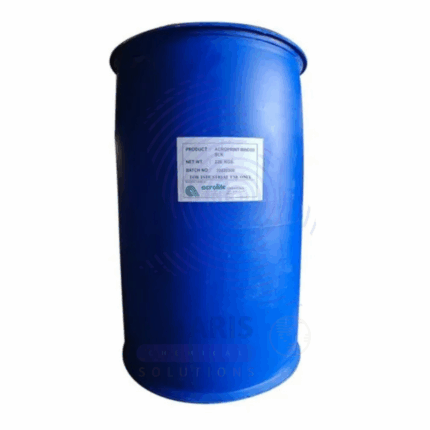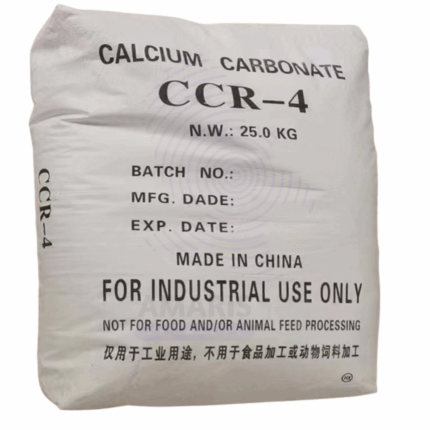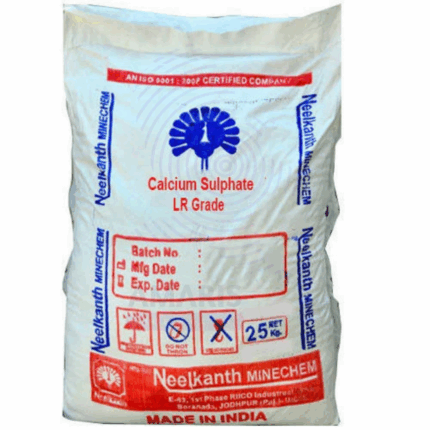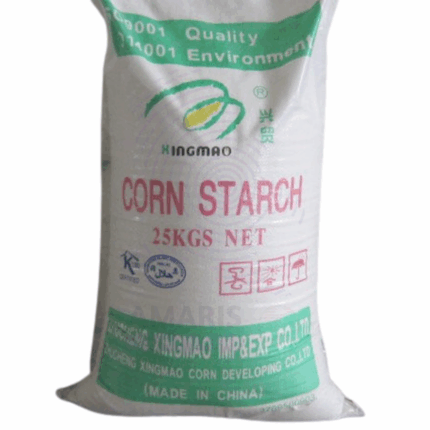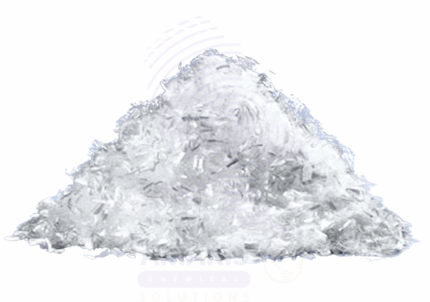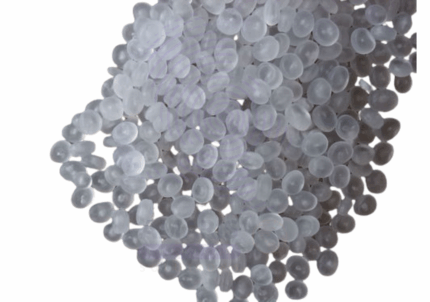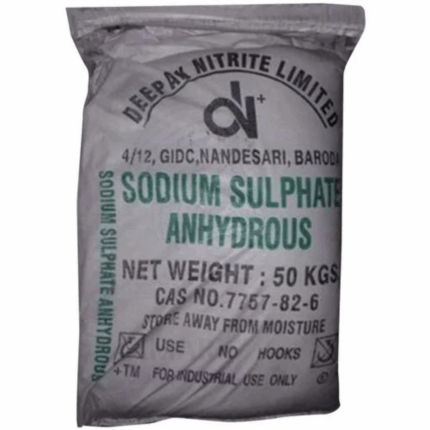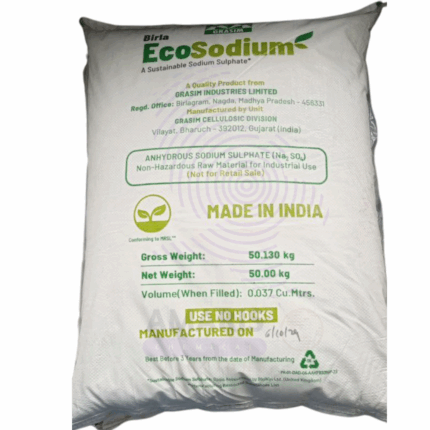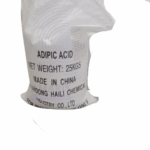
Adipic Acid
$ 3.20
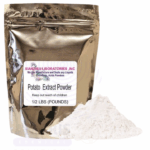
African Potato Extract
$ 11.70 Original price was: $ 11.70.$ 11.59Current price is: $ 11.59.
Aerosil 200
$ 6.21
Whatsapp Order
Aerosil 200 is a fumed silica (synthetic amorphous silicon dioxide) produced by flame hydrolysis of silicon tetrachloride. It appears as a very fine, white, fluffy powder with high surface area and excellent thickening and anti-caking properties.
Description
Table of Contents
Toggle
Aerosil 200
Primary Uses
- Reinforcing Agent in Polymers & Elastomers
- Improves mechanical strength and abrasion resistance in:
- Silicone rubber (seals, gaskets, medical devices)
- Epoxy resins (coatings, adhesives)
- PVC, polyurethanes (cables, automotive parts)
- Thickening & Anti-Settling Agent
- Prevents sagging in:
- Paints, coatings, inks (improves viscosity)
- Cosmetics (lotions, creams, toothpaste)
- Adhesives & sealants (enhances stability)
- Free-Flow Agent for Powders
- Prevents caking in:
- Pharmaceutical tablets (improves powder flow)
- Food powders (spices, instant drinks)
- Industrial chemicals (pigments, detergents)
- Matting Agent
- Reduces gloss in:
- Paints, varnishes (architectural/automotive finishes)
- Plastics & films (packaging, synthetic leather)
Secondary Uses
- Battery & Energy Storage
- Improves electrolyte stability in lithium-ion batteries.
- Catalyst Support
- High surface area (200 m²/g) for chemical catalysis.
- 3D Printing
- Enhances powder flowability in SLS (Selective Laser Sintering).
- Thermal Insulation
- Used in aerogels and high-temperature insulation.
- Defoaming Agent
- Controls foam in industrial processes (e.g., wastewater treatment).
KEY PRODUCT FEATURES
1. Basic Identification Attributes
- Chemical Name: Propan-2-one (IUPAC), Acetone (common)
- CAS Number: 67-64-1
- HS Code: 2914.11.00
- Molecular Formula: C₃H₆O
- Synonyms: Dimethyl ketone, 2-propanone
2. Physical & Chemical Properties
- Physical State: Liquid
- Color & Odor: Colorless, pungent sweetish odor
- Boiling Point: 56°C | Melting Point: -95°C
- Density: 0.791 g/cm³
- Solubility: Miscible in water, ethanol, ether
- pH Level: ~7 (neutral)
- Vapor Pressure: 233 mmHg (25°C)
- Flash Point: -20°C (highly flammable)
- Autoignition Temperature: 465°C
- Viscosity: 0.32 cP (25°C)
3. Safety & Hazard Attributes
- Hazard Class: Flammable Liquid (GHS Category 2), Eye Irritant
- NFPA Ratings: Health (1), Flammability (3), Reactivity (0)
- Exposure Limits: OSHA PEL (1000 ppm), ACGIH TLV (500 ppm)
- Reactivity: Incompatible with strong oxidizers, acids
4. Storage & Handling Attributes
- Storage Conditions: Cool, well-ventilated, away from ignition sources
- Incompatible Materials: HNO₃, H₂O₂, halogens
- Container Type: Plastic (HDPE) or metal (stainless steel)
- Shelf Life: Indefinite if sealed properly
- Special Handling: Use explosion-proof equipment, chemical gloves
5. Regulatory & Compliance Attributes
- Regulatory Status: EPA (non-HAP), REACH registered, DOT Class 3 (flammable)
- Hazard Symbols: ⚠️ (Flammable), GHS02, GHS07
- Transportation Restrictions: UN1090, Packing Group II
- Waste Disposal: Incineration or RCRA-approved solvent recovery
6. Environmental & Health Impact
- Ecotoxicity: LC50 (fish, 96h) = 4.3 g/L (low toxicity)
- Persistence: Readily biodegradable (half-life < 5 days)
- Carcinogenicity: Not classified (IARC Group 3, OSHA non-carcinogen)
SAFETY HANDLING PRECAUTIONS
Safety Precautions
Personal Protective Equipment (PPE):
- Respiratory: NIOSH-approved N95 respirator (for dust)
- Eye Protection: Tight-fitting safety goggles
- Gloves: Nitrile or neoprene
- Body: Long-sleeved clothing + lab coat
Handling & Storage:
- Avoid dust generation (use closed systems where possible)
- Ground equipment (static electricity hazard)
- Store in sealed containers away from moisture
- Keep away from strong oxidizers (e.g., peroxides)
Hygiene Practices:
- No eating/drinking in handling areas
- Wash hands/face after use
- Provide emergency eyewash station
First Aid Measures
Inhalation (Dust):
- Move to fresh air immediately
- If breathing is difficult, seek medical attention
Eye Contact:
- Rinse with water for 15+ minutes (hold eyelids open)
- Seek medical help if irritation persists
Skin Contact:
- Wash with soap and water
- Apply moisturizer if dryness occurs
Ingestion:
- Rinse mouth with water
- Drink plenty of water
- Do NOT induce vomiting
- Seek medical advice
Firefighting Measures
Fire Hazards:
- Non-flammable but may form explosive dust clouds
- Decomposes at >1000°C, releasing crystalline silica dust
Extinguishing Media:
✔ Water spray (best for dust suppression)
✔ CO₂
✔ Dry chemical powder
Firefighting Precautions:
- Wear SCBA (self-contained breathing apparatus)
- Avoid raising dust during firefighting
- Cool containers with water spray
Spill & Disposal
Small Spills:
- Wear dust mask + gloves
- Dampen with water mist to suppress dust
- Sweep up carefully
Large Spills:
- Isolate area
- Use industrial vacuum (explosion-proof)
- Prevent entry into drains/waterways
Disposal:
- Dispose as non-hazardous waste (unless contaminated)
- Follow local silica dust regulations
Related products
Aluminum hydroxide
Aluminum Hydroxide, chemically known as Al(OH)₃, is a white, odorless, and odorless powder or gelatinous substance. It is widely used in pharmaceuticals as an antacid to neutralize stomach acid and relieve indigestion and heartburn. Beyond healthcare, aluminum hydroxide is a crucial component in water purification, fire retardants, and as a precursor or filler in various industrial applications. It functions as a flame retardant by releasing water upon heating, thus cooling the material and diluting flammable gases. Due to its amphoteric nature, it can react both as an acid and base, enhancing its versatility. Aluminum hydroxide is often utilized in manufacturing aluminum salts and in producing aluminum oxide.
Binder
A binder is a broad category of substances—organic or inorganic—used to hold different materials together in a cohesive mass. Common binders include natural polymers (starch, cellulose derivatives, proteins), synthetic resins (PVA, acrylics, phenolics), and inorganic binders (clays, cement, lime). They are essential in industries such as pharmaceuticals, construction, coatings, ceramics, adhesives, and printing, where they provide structural integrity, adhesion, and controlled release properties.
Calcium Carbonate Filler
Calcium Carbonate Filler is a high-quality, uncoated ground calcium carbonate (GCC) specially engineered for use as a filler in polyethylene (PE) and other polyolefin resins. This grade of calcium carbonate is designed to enhance the physical and mechanical properties of plastics while providing cost-effective bulk and improved processing. It is a fine, white, odorless powder with excellent brightness, high purity, and uniform particle size distribution. Its use improves stiffness, impact resistance, dimensional stability, and surface finish in polyethylene applications such as films, sheets, pipes, and molded parts.
Calcium Sulphate
Calcium Sulphate is an inorganic compound composed of calcium, sulfur, and oxygen, commonly found in two forms: dihydrate (gypsum, CaSO4·2H2O) and anhydrous (CaSO4). It appears as a white or off-white crystalline powder or granules with low solubility in water. Calcium Sulphate is widely used in construction, agriculture, pharmaceuticals, food industry, and various industrial applications. It acts as a filler, hardening agent, and drying agent due to its physical and chemical properties. The dihydrate form (gypsum) is notable for use in plaster and cement, while the anhydrous form is often used as a drying agent and in refractory materials.
Corn Starch Industrial Grade
Corn Starch Industrial Grade is a finely milled, white powder derived from the endosperm of maize (Zea mays). Unlike food-grade starch, industrial grade is tailored for non-food applications where its thickening, adhesive, and film-forming properties are exploited. It consists primarily of amylose and amylopectin polysaccharides and is valued for its biodegradability, renewability, and cost-effectiveness. Industrial corn starch is used extensively as a raw material or functional additive across a wide variety of manufacturing processes, including paper, textiles, adhesives, and packaging industries.
Master Fibre
Master Fibre is a high-quality synthetic fiber additive designed to reinforce concrete and mortar mixtures. It improves structural integrity by enhancing tensile strength, reducing cracking, and increasing durability. The fibers disperse uniformly within the mix, providing better load distribution and impact resistance in industrial, commercial, and residential construction applications. Master Fibre enhances performance without compromising workability, making it ideal for use in concrete slabs, pavements, beams, and repair mortars.
PP Raffia RH03( Wooven)
PP Raffia RH03( Wooven) is a woven polypropylene fabric made from homopolymer polypropylene resin, designed for high strength, durability, and excellent dimensional stability. It is widely used in the manufacturing of woven sacks, bags, and other flexible packaging solutions. The woven structure enhances tear resistance and load-bearing capacity, making it suitable for industrial and agricultural packaging applications.
Sodium Sulphate Anhydrous
Sodium Sulphate Anhydrous (Na₂SO₄) is a white crystalline powder, odorless and highly soluble in water. Unlike the decahydrate form (Glauber's salt), this anhydrous grade contains minimal water content, making it ideal for industrial applications requiring low moisture levels. Supplied in 25kg packaging, it is widely used as a filler, drying agent, and raw material in detergents, glass manufacturing, pulp and paper, and chemical synthesis. Its excellent stability, non-hygroscopic nature, and cost-effectiveness make it an essential bulk chemical.


 Preservatives(food)
Preservatives(food) Flavor Enhancers
Flavor Enhancers Acidulants
Acidulants Sweeteners
Sweeteners Antioxidants
Antioxidants Colorants(food)
Colorants(food) Nutraceutical Ingredients (food)
Nutraceutical Ingredients (food) Nutrient Supplements
Nutrient Supplements Emulsifiers
Emulsifiers
 Collectors
Collectors Dust Suppressants
Dust Suppressants Explosives and Blasting Agents
Explosives and Blasting Agents Flocculants and Coagulants
Flocculants and Coagulants Frothers
Frothers Leaching Agents
Leaching Agents pH Modifiers
pH Modifiers Precious Metal Extraction Agents
Precious Metal Extraction Agents
 Antioxidants(plastic)
Antioxidants(plastic) Colorants (Pigments, Dyes)
Colorants (Pigments, Dyes) Fillers and Reinforcements
Fillers and Reinforcements Flame Retardants
Flame Retardants Monomers
Monomers Plasticizers
Plasticizers Polymerization Initiators
Polymerization Initiators Stabilizers (UV, Heat)
Stabilizers (UV, Heat)
 Antifoaming Agents
Antifoaming Agents Chelating Agents
Chelating Agents Coagulants and Flocculants
Coagulants and Flocculants Corrosion Inhibitors
Corrosion Inhibitors Disinfectants and Biocides
Disinfectants and Biocides Oxidizing Agents
Oxidizing Agents pH Adjusters
pH Adjusters Scale Inhibitors( water)
Scale Inhibitors( water)
 Antioxidants(cosmetic)
Antioxidants(cosmetic) Emollients
Emollients Fragrances and Essential Oils
Fragrances and Essential Oils Humectants
Humectants Preservatives
Preservatives Surfactants(cosmetic)
Surfactants(cosmetic) Thickeners
Thickeners UV Filters
UV Filters
 Fertilizers
Fertilizers Soil Conditioners
Soil Conditioners Plant Growth Regulators
Plant Growth Regulators Animal Feed Additives
Animal Feed Additives Biostimulants
Biostimulants Pesticides (Herbicides, Insecticides, Fungicides)
Pesticides (Herbicides, Insecticides, Fungicides)
 Active Pharmaceutical Ingredients (APIs)
Active Pharmaceutical Ingredients (APIs) Excipients
Excipients Solvents(pharmaceutical)
Solvents(pharmaceutical) Antibiotics
Antibiotics Antiseptics and Disinfectants
Antiseptics and Disinfectants Vaccine Adjuvants
Vaccine Adjuvants Nutraceutical Ingredients (pharmaceutical)
Nutraceutical Ingredients (pharmaceutical) Analgesics & Antipyretics
Analgesics & Antipyretics
 Analytical Reagents
Analytical Reagents Solvents(lab)
Solvents(lab) Chromatography Chemicals
Chromatography Chemicals Spectroscopy Reagents
Spectroscopy Reagents microbiology-and-cell-culture-reagents
microbiology-and-cell-culture-reagents Molecular Biology Reagents
Molecular Biology Reagents Biochemical Reagents
Biochemical Reagents Inorganic and Organic Standards
Inorganic and Organic Standards Laboratory Safety Chemicals
Laboratory Safety Chemicals Specialty Laboratory Chemicals(Special Laboratory Equipment)
Specialty Laboratory Chemicals(Special Laboratory Equipment)
 Demulsifiers
Demulsifiers Hydraulic Fracturing Fluids
Hydraulic Fracturing Fluids Scale Inhibitors(oil)
Scale Inhibitors(oil) Surfactants(oil)
Surfactants(oil) Drilling Fluids
Drilling Fluids
 Dyes and Pigments
Dyes and Pigments Bleaching Agents
Bleaching Agents Softening Agents
Softening Agents Finishing Agents
Finishing Agents Antistatic Agents
Antistatic Agents
 Admixtures
Admixtures Waterproofing Agents
Waterproofing Agents Sealants and Adhesives
Sealants and Adhesives Curing Compounds
Curing Compounds Concrete Repair Chemicals
Concrete Repair Chemicals Anti-Corrosion Coatings
Anti-Corrosion Coatings
 Surfactants(cleaning)
Surfactants(cleaning) Builders
Builders Enzymes
Enzymes Solvents (Cleaning)
Solvents (Cleaning) Fragrances
Fragrances
 Electronic Chemicals
Electronic Chemicals Catalysts
Catalysts Lubricants
Lubricants Photographic Chemicals
Photographic Chemicals Refrigerants
Refrigerants Automotive chemicals
Automotive chemicals Pyrotechnic Chemicals
Pyrotechnic Chemicals
 Biodegradable Surfactants
Biodegradable Surfactants Bio-based Solvents
Bio-based Solvents Renewable Polymers
Renewable Polymers Carbon Capture Chemicals
Carbon Capture Chemicals Wastewater Treatment Chemicals
Wastewater Treatment Chemicals
 Pigments
Pigments Solvents(paint)
Solvents(paint) Specialty Coatings
Specialty Coatings Binders/Resins
Binders/Resins Additives
Additives Driers
Driers Anti-Corrosion Agents
Anti-Corrosion Agents Functional Coatings
Functional Coatings Application-Specific Coatings
Application-Specific Coatings
 Fresh Herbs
Fresh Herbs Ground Spices
Ground Spices Whole Spices
Whole Spices Spice Blends
Spice Blends Dried Herbs
Dried Herbs
 Leavening Agents
Leavening Agents Dough Conditioners
Dough Conditioners Flour Treatments
Flour Treatments Fat Replacers
Fat Replacers Decoratives
Decoratives Preservatives(baking)
Preservatives(baking)
 Plasticizers & Softeners
Plasticizers & Softeners Reinforcing Agents
Reinforcing Agents Adhesion Promoters
Adhesion Promoters Vulcanizing Agents
Vulcanizing Agents Antidegradants
Antidegradants Blowing Agents
Blowing Agents Fillers & Extenders
Fillers & Extenders Accelerators & Retarders
Accelerators & Retarders



